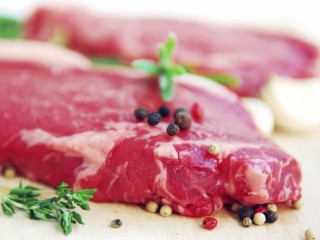 Rumours of substitution of Australian-bred, but Indonesian-fed and slaughtered cattle for higher-priced direct Australian imported beef are nothing new, and in fact have been evident for years in small quantities throughout southeast Asia, a credible trade contact in Indonesia told Beef Central.
Rumours of substitution of Australian-bred, but Indonesian-fed and slaughtered cattle for higher-priced direct Australian imported beef are nothing new, and in fact have been evident for years in small quantities throughout southeast Asia, a credible trade contact in Indonesia told Beef Central.
The practice is said to occur in the supermarket sector, rather than through the traditional wet market, which accounts for the overwhelming majority of Australian live export cattle consigned to Indonesia.
Ten or twelve years ago, a similar issue emerged when Australians involved in Indonesian live export/feedlot joint ventures sought to access MLA co-funds to support brand development work designed to promote locally fed and processed beef produced from imported Australian cattle as “Australian beef.”
They argued that processing was taking place in modern, international standard processing facilities, and that high levels of quality control were applied to feedstuffs and feedlot management practices.
The proposal created something of an uproar in Australia, and was eventually sunk on the basis that it represented a perceived clear and present danger to the international reputation of ‘brand Australia’ in the event of bacterial contamination, chemical residue or other issues.
While the current episode in Indonesian supermarkets makes no attempt to deceive customers through terms like ‘Australian beef’, it is perhaps more akin to ‘muddying the waters’ in terms of the supply source. Imported and domestic beef typically occupy different chilled cabinets in Indonesian supermarkets.
Current supermarket retail price distinctions between chilled imported Australian beef and domestically-produced fed beef (often of not dissimilar quality) are currently about 25 percent, Beef Central’s trade contact said.
Imported chilled tenderloins currently sold in the ‘modern retail’ supermarket segment for around 250,000-300,000 Rupiah/kg, and locally-produced (from Australian cattle) about R200,000. Local striploins are selling for R150,000, and imported, R200,000.
“Those Indonesian consumers using supermarkets are no different than those in most developing countries across Asia. A product labelled imported is immediately regarded as superior in quality, even if it is not significantly better in meat quality attributes,” the trade contact said.
“But when a locally-produced product does measure-up in terms of quality, MLA has always struggled with the appropriate label and descriptor.”
“Can Australia do anything about it? The answer is probably no, as this is very much an Indonesian domestic issue,” he said.
Beef Central’s contact said the substitution issue was limited to those imports where the product performance was not dissimilar. The prospect for substitution was much less likely in the case of Wagyu or higher quality fed Angus type Australian product, which represented a substantial trade in in the chilled loin cuts segment. Such products were much easier to distinguish from locally-produced beef.
Nor did the supermarket substitution issue apply to non-loin cuts like blades, rumps, briskets or chucks, because these items tended to be imported frozen. In fact in many supermarkets, locally-produced higher quality secondary cuts often extracted a small premium over Australian imported equivalents, because it is chilled instead of frozen.
“But having said that, there is no doubt that it is possible to go into a supermarket and see locally-produced, unlabelled loin cuts sitting in the imported beef section. It is easy to identify by cutting lines, particularly on items like T-bones,” Beef Central’s contact said.
He was adamant that the substitution or identity-blurring, was occurring at the supermarket retail level, rather than at wholesale or distribution level.
However he stoutly rejected any notion that the practice represented any significant threat to Australia’s reputation in the marketplace.
There were three well-known abattoirs in Indonesia that processed Australian-bred stock for the country’s chilled beef trade, and all three held HACCP and ISO9001 accreditation, provided an internationally-accepted standard of performance.
“The amounts of beef involved in potential substitution are very small. Year to date, there has been roughly 25,000 tonnes of beef imported from Australia, but less than 10 percent of that is chilled. And of that chilled portion, the great majority would be higher quality like fed Angus, making substitution much harder to pull-off.”
The great majority of the chilled trade out of Australia (2497t, year to August, according to DAFF statistics) also went straight to five-star hotels, and not the supermarket trade.
Indonesian processors would struggle to kill 2500 cattle a month for the chilled market, the trade contact suggested.
-
See today's companion story, "Serious cattle shortage drivres up prices in Indo"



HAVE YOUR SAY